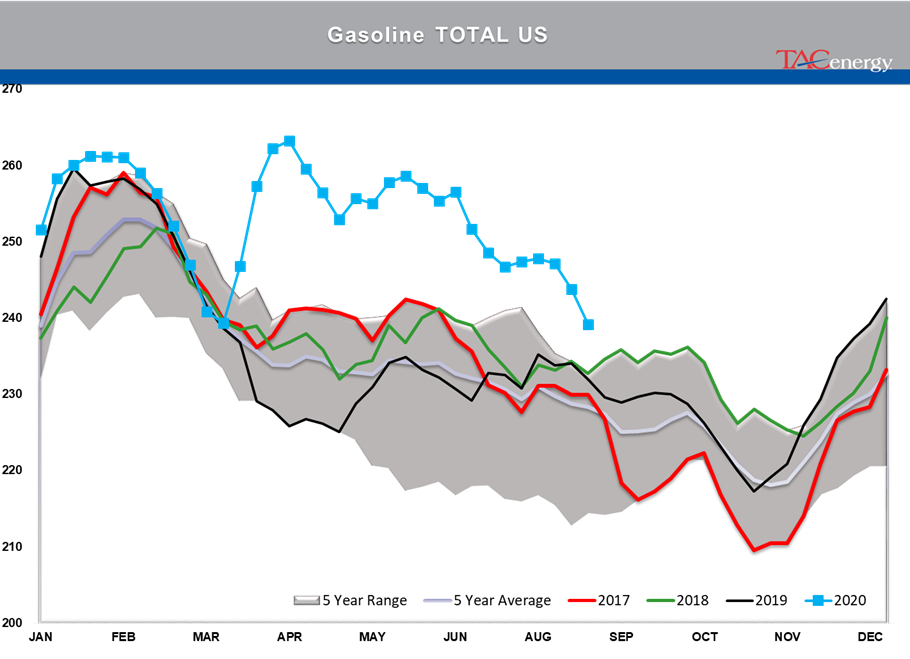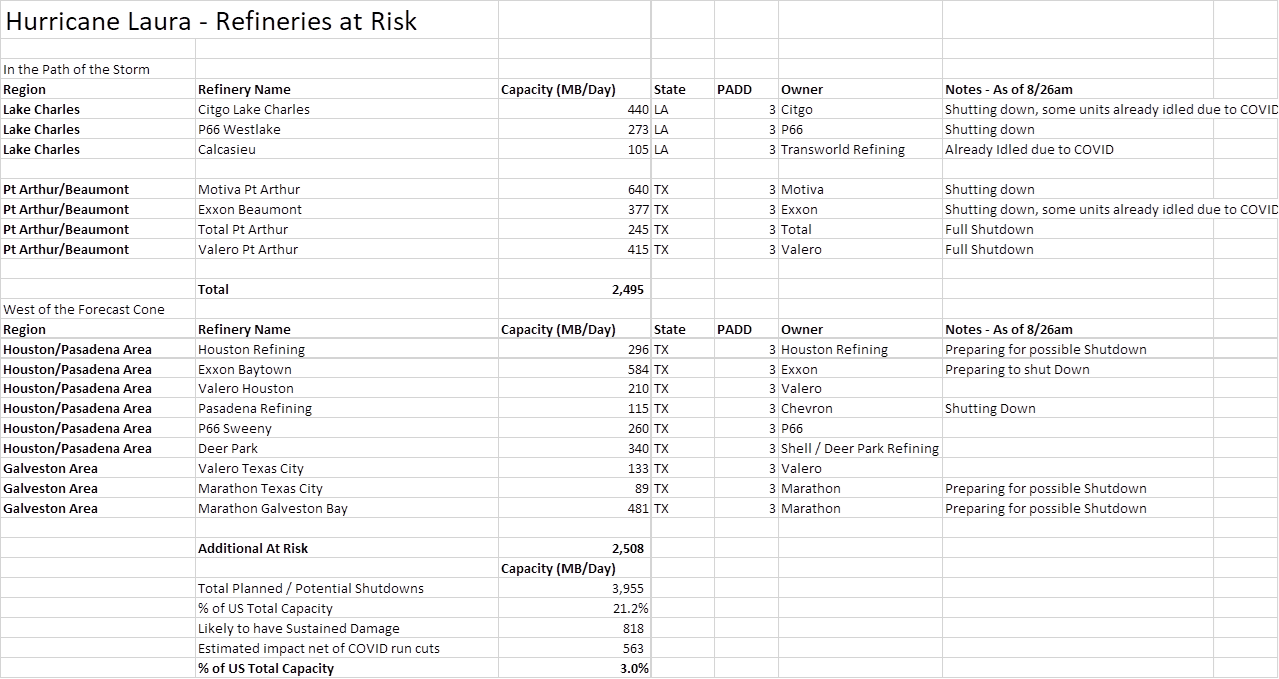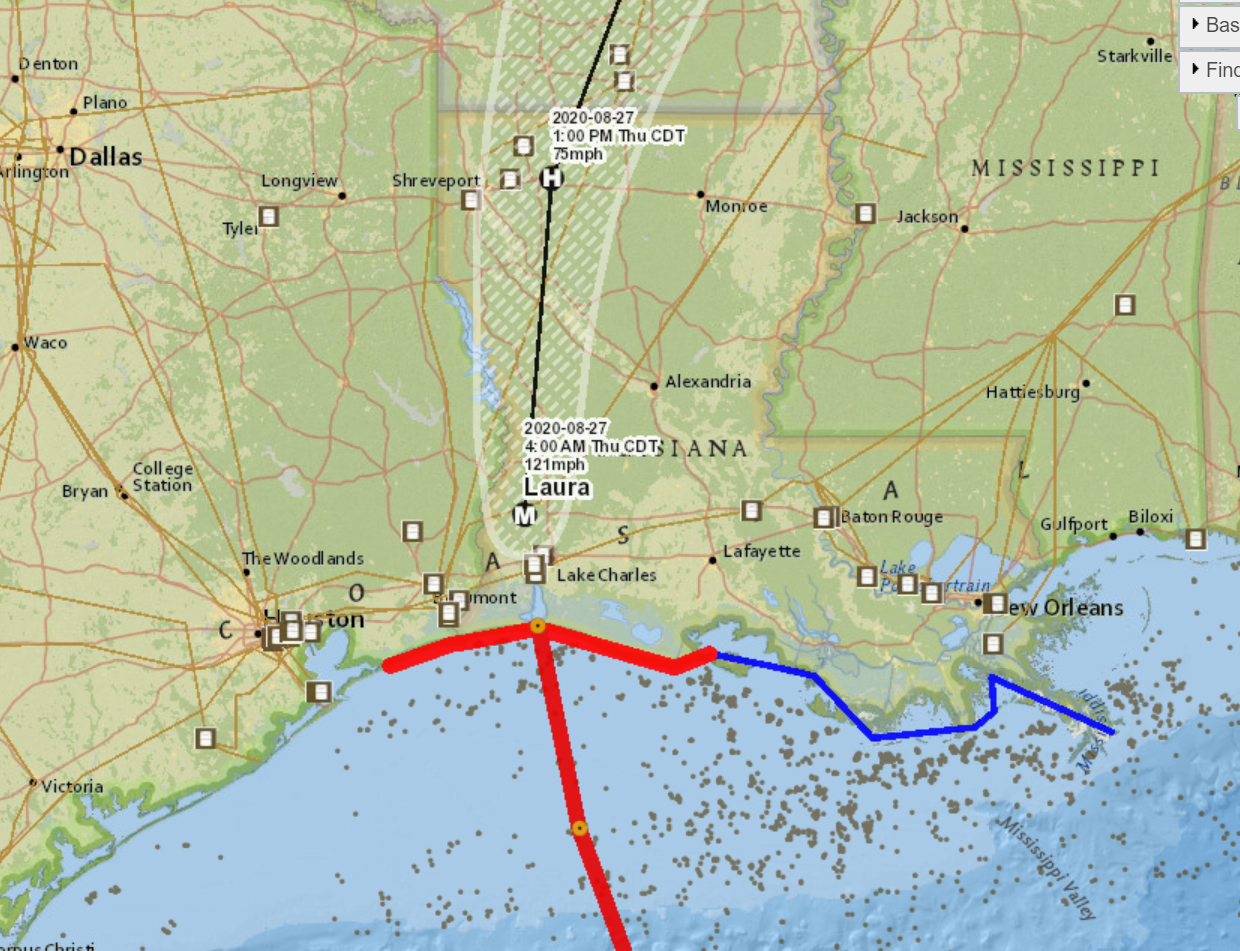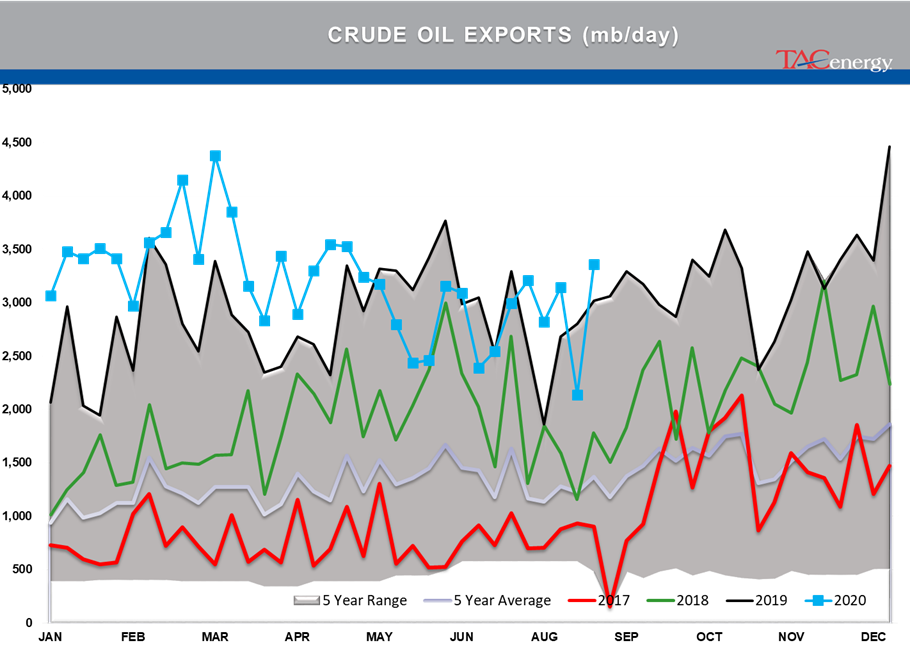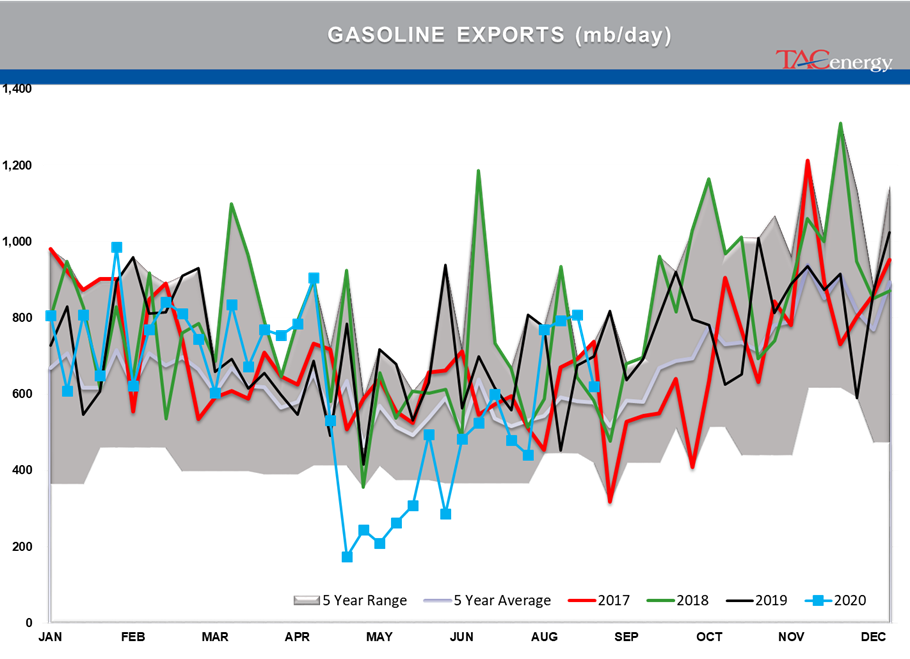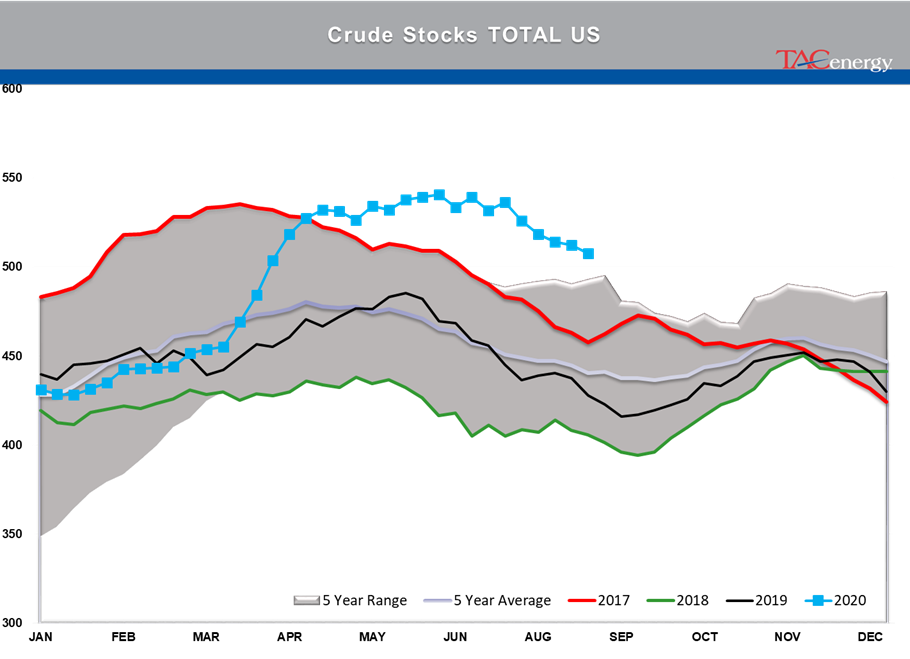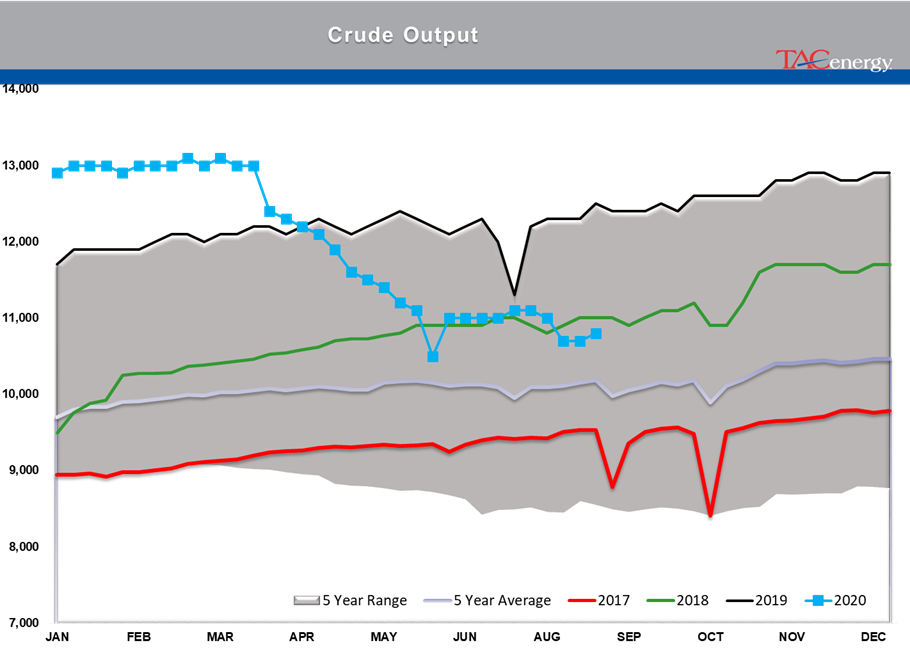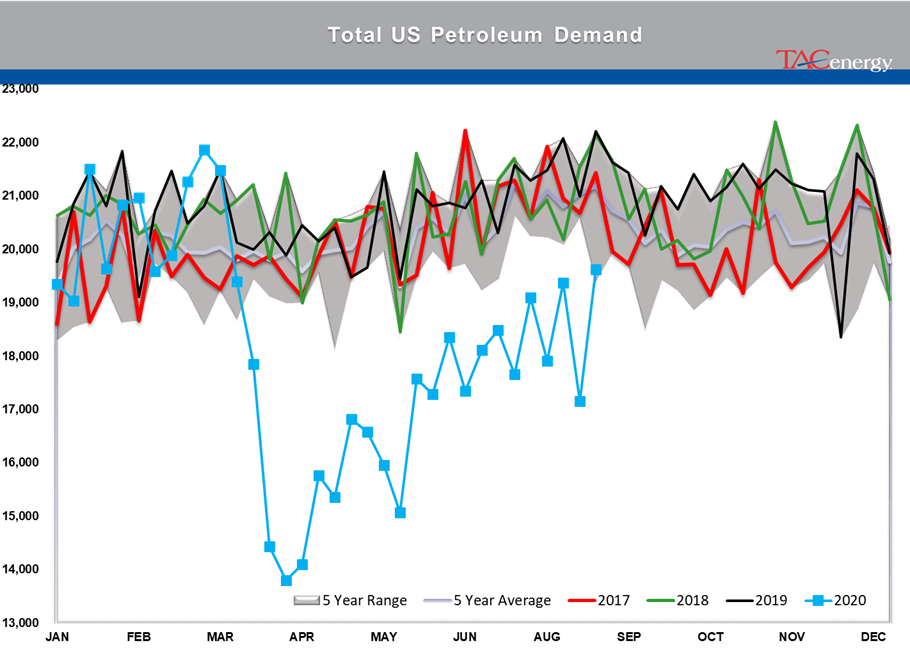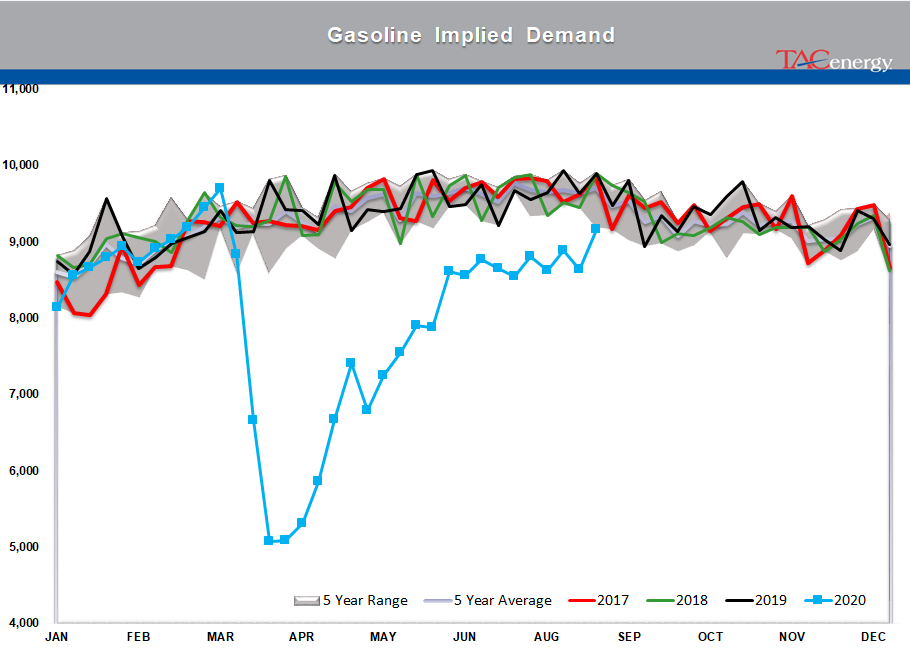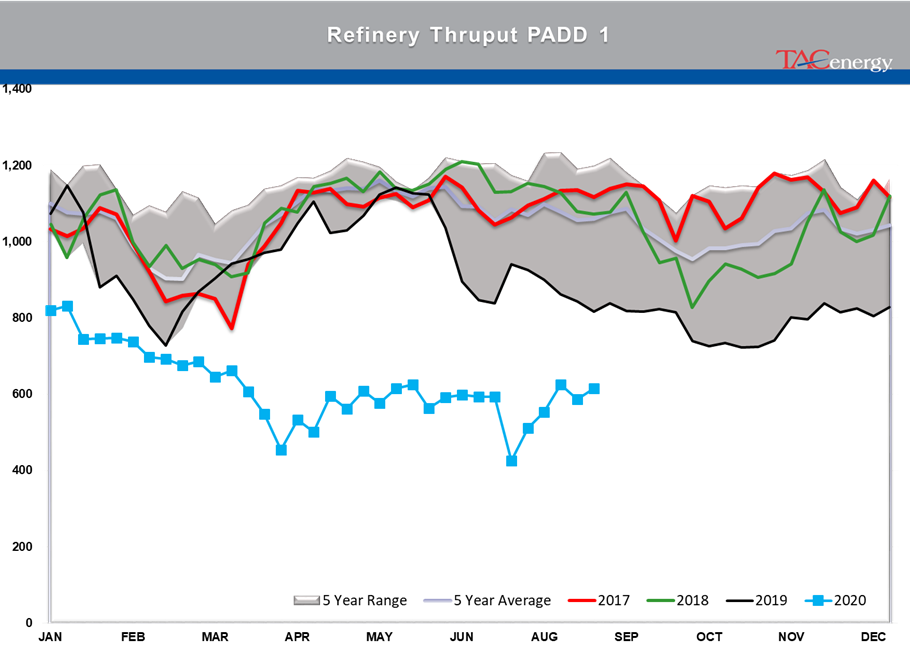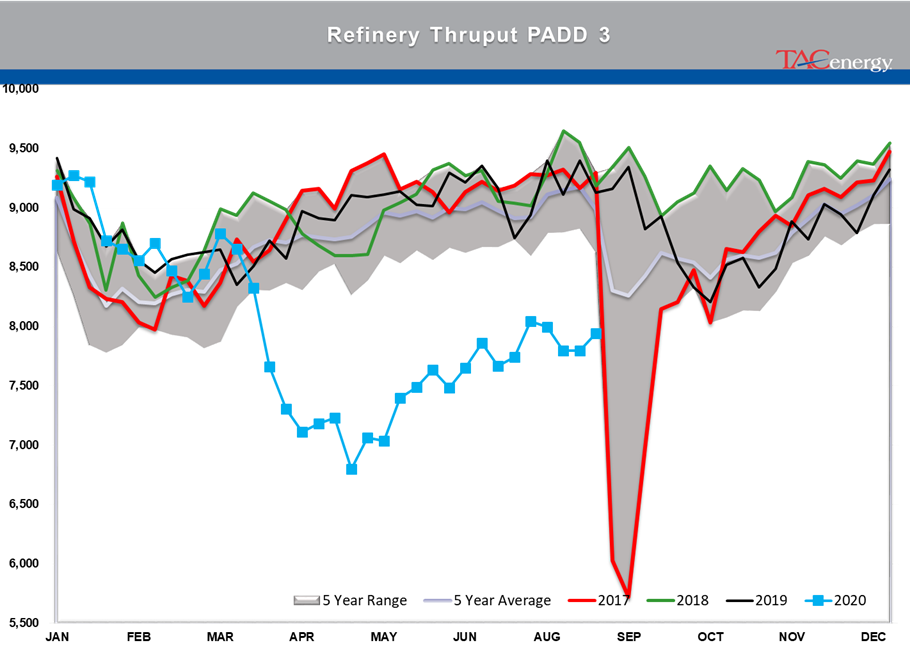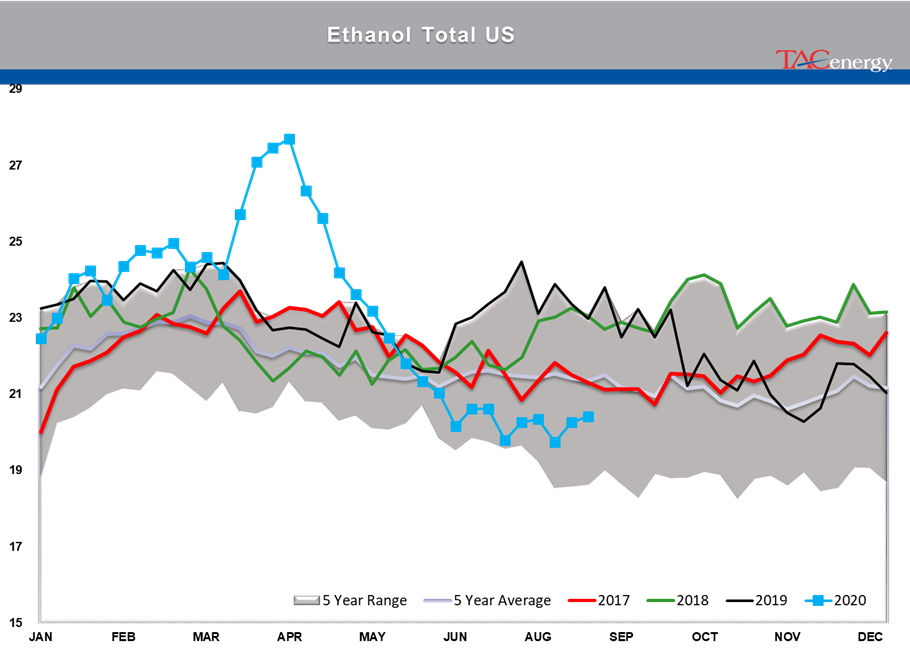Hurricane Shifts From The Heart Of Refining Country

Energy futures continue to retreat this morning as the strongest hurricane to hit the Gulf Coast in decades appears to have shifted just enough to the east to avoid damaging the heart of refining country. Equity futures are also pointed lower this morning as another weekly jobless claim report north of one million gives a dose of reality to indices that have reached record highs, despite the damage done to the economy by the COVID fallout.
Hurricane Laura made landfall overnight as a Category 4 storm, the strongest to hit the Louisiana coast in 168 years. Another shift to the east prior to landfall meant many gulf coast facilities look like they dodged most of the storms wrath, and some Houston-area terminals are already loading trucks this morning.
Unfortunately for the residents and refineries around Lake Charles, the storm did not appear to move far enough east for them to avoid a direct hit, although it’s too soon to say what damage may have been done to those facilities, but early reports from the city suggest substantial flooding and wind damage. One of three refineries around Lake Charles was already idled due to COVID-related demand destruction, and another was running well below normal rates, so it seems that in total we may only see roughly three percent of total U.S. refining capacity damaged by the storm, compared to estimates closer to 20 percent had the storm hit further west.
Although Lake Charles is an origin point along the Colonial pipeline, as long as the Houston/Pasadena and Port Arthur/Beaumont hubs weren’t damaged, we likely won’t see any major impact on pipeline deliveries. Explorer pipeline did shut down temporarily to allow the storm to pass, but it too may see limited impact thanks to the eastward shift of the storm since it originates from the Houston and Port Arthur hubs.
Now that the storm has passed by the majority of petroleum supply infrastructure, it may become a demand killer as it spreads flooding rains among large parts of the U.S. until re-emerging off the East Coast this weekend.
Yesterday’s DOE report was largely ignored due to the focus on the storm, but it did have some good news as demand estimates reached their highest levels since the start of COVID shutdowns, and in some cases demand has returned to the low end of the five year seasonal range.
Note the large declines in export volumes and refinery runs in September 2017 in the aftermath of Harvey (red line in the seasonal charts below) and you’ll get a good idea of what next week’s DOE report might look like due to the widespread shutdowns ahead of Laura’s landfall. The difference in the two storms so far is that more plants and ports shut ahead of the storm, which should mean a faster recovery when it moves past barring catastrophic damage.
Click here to download a PDF of today's TACenergy Market Talk.
Latest Posts
Week 17 - US DOE Inventory Recap
The Energy Complex Is Trading Modestly Lower So Far This Morning With WTI Crude Oil Futures Leading The Way
Energy Futures Are Drifting Quietly Higher This Morning
Refined Products Holding Close To Break Even While Oil Prices Are Losing Just Under 1%
Social Media
News & Views
View All
Week 17 - US DOE Inventory Recap

The Energy Complex Is Trading Modestly Lower So Far This Morning With WTI Crude Oil Futures Leading The Way
The energy complex is trading modestly lower so far this morning with WTI crude oil futures leading the way, exchanging hands $1.50 per barrel lower (-1.9%) than Tuesday’s settlement price. Gasoline and diesel futures are following suit, dropping .0390 and .0280 per gallon, respectively.
A surprise crude oil build (one that doesn’t include any changes to the SPR) as reported by the American Petroleum Institute late Tuesday is taking credit for the bearish trading seen this morning. The Institute estimated an increase in crude inventories of ~5 million barrels and drop in both refined product stocks of 1.5-2.2 million barrels for the week ending April 26. The Department of Energy’s official report is due out at it’s regular time (9:30 CDT) this morning.
The Senate Budget Committee is scheduled to hold a hearing at 9:00 AM EST this morning regarding a years-long probe into climate change messaging from big oil companies. Following a 3-year investigation, Senate and House Democrats released their final report yesterday alleging major oil companies have internally recognized the impacts of fossil fuels on the climate since as far back as the 1960s, while privately lobbying against climate legislation and publicly presenting a narrative that undermines a connection between the two. Whether this will have a tangible effect on policy or is just the latest announcement in an election-yeardeluge is yet to be seen.
Speaking of deluge, another drone attack was launched against Russian infrastructure earlier this morning, causing an explosion and subsequent fire at Rosneft’s Ryazan refinery. While likely a response to the five killed from Russian missile strikes in Odesa and Kharkiv, Kyiv has yet to officially claim responsibility for the attack that successfully struck state infrastructure just 130 miles from Moscow.
The crude oil bears are on a tear this past week, blowing past WTI’s 5 and 10 day moving averages on Monday and opening below it’s 50-day MA this morning. The $80 level is likely a key resistance level, below which the path is open for the American oil benchmark to drop to the $75 level in short order.
Click here to download a PDF of today's TACenergy Market Talk.

Energy Futures Are Drifting Quietly Higher This Morning
Energy futures are drifting quietly higher this morning as a new round of hostage negotiations between Israel and Hamas seem to show relative promise. It seems the market is focusing on the prospect of cooler heads prevailing, rather than the pervasive rocket/drone exchanges, the latest of which took place over Israel’s northern border.
A warmer-than-expected winter depressed diesel demand and, likewise, distillate refinery margins, which has dropped to its lowest level since the beginning of 2022. The ULSD forward curve has shifted into contango (carry) over the past month as traders seek to store their diesel inventories and hope for a pickup in demand, domestic or otherwise.
The DOE announced it had continued rebuilding it’s Strategic Petroleum Reserve this month, noting the addition of 2.3 million barrels of crude so far in April. Depending on what the private sector reported for last week, Wednesday’s DOE report may put current national crude oil inventories (include those of the SPR) above the year’s previous levels, something we haven’t seen since April of 2022, two months after Ukraine war began.
The latest in the Dangote Refinery Saga: Credit stall-out, rising oil prices, and currency exchange.
Click here to download a PDF of today's TACenergy Market Talk.
